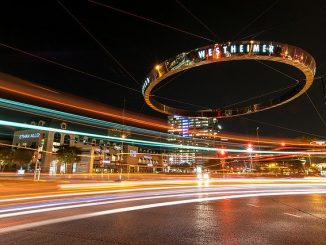
Wow, wow, wow!
Rad Sallee has given us so much truth in one story about Metro ridership. In clear black and white, all of Metro’s obfuscation is on full display:
[Metro President Frank] Wilson passed out a quarterly report that says total bus and rail ridership for the nine months through June was 6.5 percent higher than a year earlier. A footnote, however, explains that the numbers are adjusted.
Unadjusted and more recent counts show total ridership for October through July was actually down 1.5 percent, driven by a 9 percent drop in the local bus component that serves many poorer neighborhoods in the inner city — the core mission of public transit.
YES! For all those who say that light rail critics are just anti-Metro, that’s the point right there. Metro’s core mission as a public transit agency is to provide transportation to those who have no other transit options. I certainly don’t mind Metro’s sales tax if it’s providing the public service it is supposed to and that it promised. But Metro isn’t doing that. Metro has decided to change its mission to one of catering to commuters with light rail trains and now (don’t say Bus) Rapid Transit.
Jim Archer, Metro’s manager of service evaluation, said the raw fiscal 2004 numbers are misleading because of two unusual events that will not be repeated: The agency cut 37 poorly performing bus routes and changed numerous others to connect better with the new light rail line and avoid duplicating service.
So, because of 7.5 miles of downtown light rail, numerous bus routes had to be changed…to feed into the light rail. Which, of course, usually makes getting around much more inconvenient for bus riders.
But Metro’s route changes can’t explain why local bus boardings have fallen each year since 1999, dragging overall ridership down with them until fiscal year 2004, when it rose 3 percent.
Archer blames the bus problems largely on construction of MetroRail and transit streets in downtown and Midtown that forced many route changes, which typically cause some riders to fall away. Then came the 9/11 attacks and the Enron debacle, which had sharp impacts on downtown trolley ridership, he said.
Metro blames 9/11 for declining trolley ridership? What hasn’t been blamed on 9/11?
And what Archer doesn’t let on is that eliminating the trolleys was always a part of Metro’s (light rail) plan, and Metro was able to do it by cutting back on trolley service and instituting a fare, when previously the trolleys had been free.
There’s a pattern here. Metro decides to build the downtown light rail, come hell or high water (or 2 inches of rain). Downtown gets torn up with light rail construction. Metro expresses puzzlement because bus and trolley ridership is down while downtown is torn up. So Metro modifies and cuts services. And ridership still plummets while light rail construction continues. Metro again scratches its head, and finally gives up and cuts bus and trolley service.
Some of Metro’s critics accuse the agency of building rail and catering to commuters while shortchanging those who depend on local buses to get to work, the doctor or the grocery store.
“They promised 50 percent more bus routes, but they don’t say that. They just say the people voted for rail,” said bus rider Mark Smith.
“Metro could have crisscrossed the county with buses for what it will cost to build the rail system.”
Yep.
Then we get into the pesky little issues of service “improvements” and per-rider subsidies:
Then there’s Terrence Wilson, who was paralyzed from the waist down in a motorcycle accident 24 years ago. Wilson, 49, depends on Metro buses and his motorized wheelchair to get around.
Because many streets in his Acres Homes neighborhood lack sidewalks, Metro built a concrete slab on the shoulder for his wheelchair, he said. But over the years, his regular bus was replaced with a circulating shuttle, and then Metro shortened that route. It no longer passes his home, and Wilson said he now rides his chair in the street for a risky 1 1/2 miles to reach the bus stop.
Archer said Wilson’s former route, the 64 Lincoln City Circulator, has kept 85 percent of its riders, despite being shortened, and now has more midday service and a more reliable schedule. It’s also a good example of a dilemma that Metro often faces, he said.
“In Acres Homes,” Archer said, “the customers are spread out, and because so many are elderly, they don’t ride the bus every day.”
That adds up to a taxpayer subsidy of $7.61 each time a rider steps on board, Archer said. As a general rule, Metro cuts or changes routes when the subsidy reaches $5.90, he said.
We want to see the per-rider subsidy for the light rail. Enough of this crap about per-rider subsidies for buses being too high. Providing bus service that can reach the people who need it the most is what Metro is SUPPOSED to be doing!
It is outrageous that Terrence Wilson has to go 1 1/2 miles in his wheelchair to catch a bus so that downtown residents and workers can look at world-class light rail trains.
Sallee’s story concludes with an appearance by Tom Bazan and an admission that Metro has no way to count actual MetroRail riders. In fact, look at how Metro can claim “booming” ridership:
Because Metro has no practical way to count actual riders, it instead keeps track of boardings — usually expressed on an average weekday basis and counted by electronic devices on buses and trains. A single trip involving transfers, like Villanueva’s journey to work, is counted as several boardings.
Metro’s service area will be lucky to have any bus service left after the next round of rail expansion.



